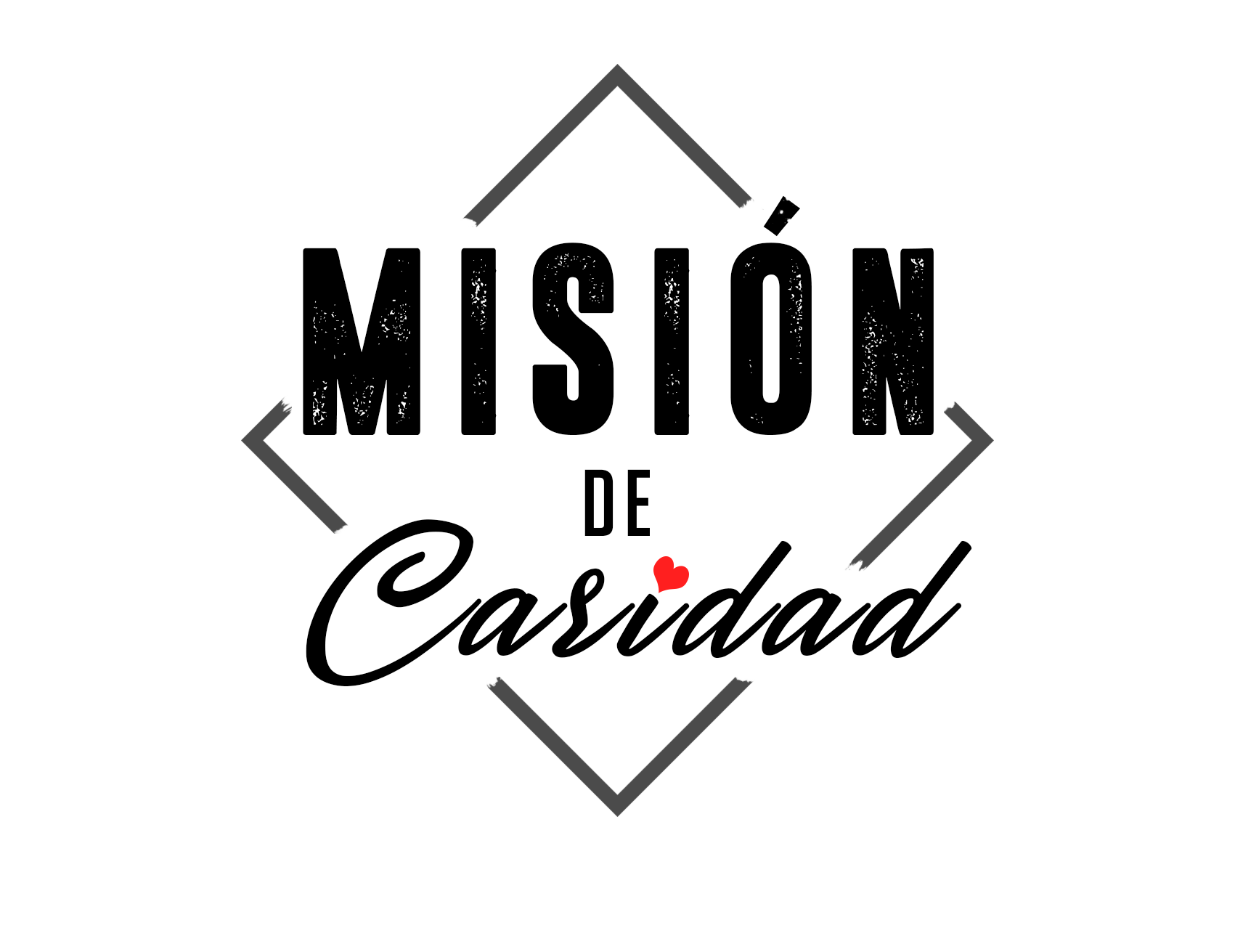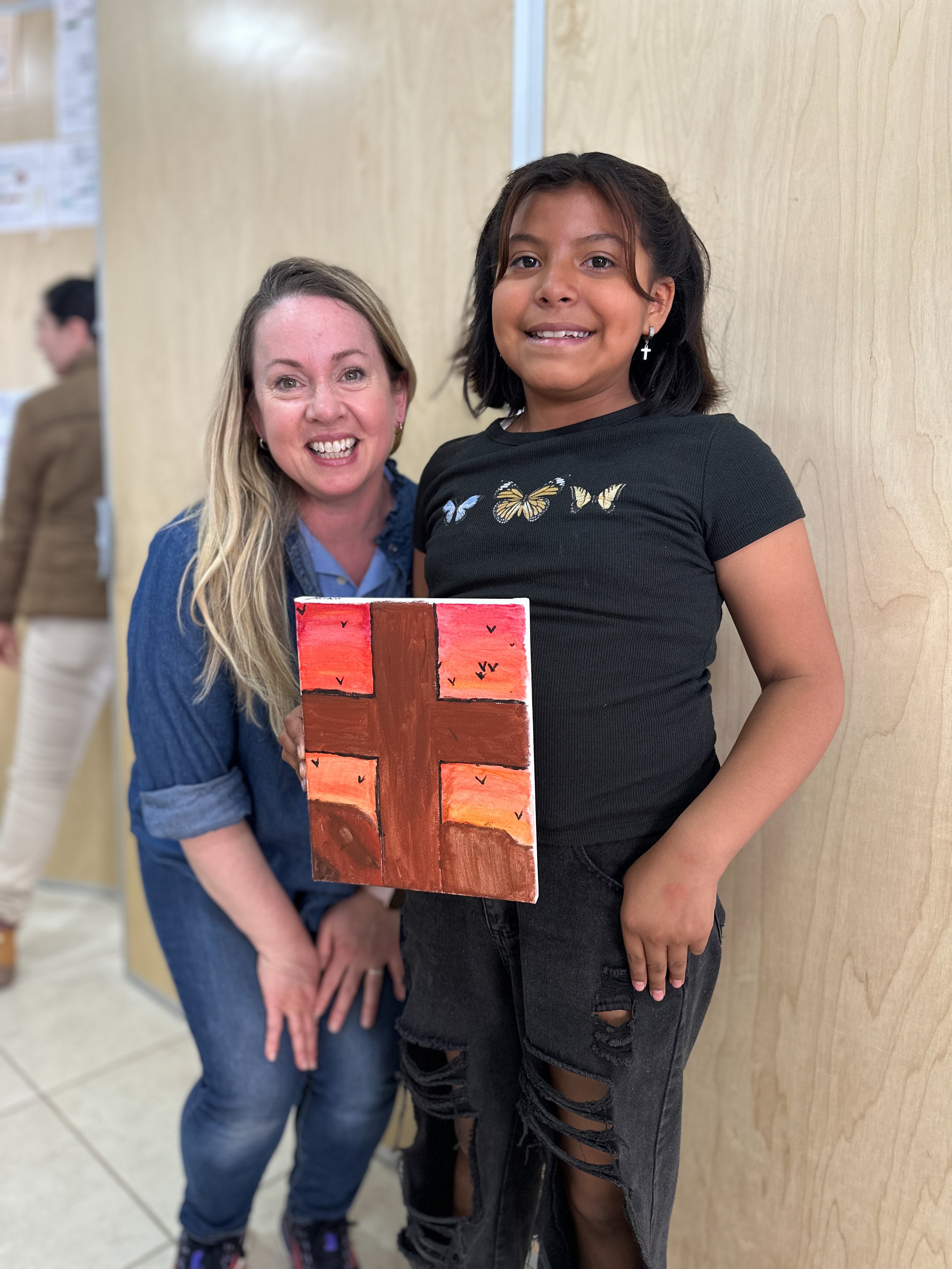The Power of Art
The merry clinking of paintbrushes swishing in glass jars filled the atmosphere. Warm sunlight filtered into the room while laughter and conversations created a buzz. Colorful dabs of paint were everywhere - on palettes, canvases, hands, arms, and brushes. This was no “Sip and Paint” at a trendy downtown wine bar. This was an art-making workshop at Casa Esperanza.
With the help of BTA juniors Adam Friedrich, Savannah Booker, and Naomi Pucci (‘25), senior Abby Hill (‘24), and recent alum Evan Tao (‘23), I was asked to facilitate an art workshop for twenty mothers and grandmothers of Casa Esperanza. We divided ourselves organically into a few small groups at big tables, each gathered around one of a few large canvases we would paint together.
The idea was simple. Different symbols of hope were chosen by our BTA students the week before. Taken from scripture, the images they selected were a dove, spring flowers, a rainbow, and a tree planted by streams of water. “Esperanza,” or “hope,” would be our theme, and the finished paintings could hang at Casa Esperanza as a tangible reminder of hope and of our time together. Prior to our trip, I had purchased, measured, cut, and sketched the images onto the canvases in my studio… then rolled them up into my carry-on luggage that would fly with us to Mexico.
Like filling in large coloring pages, we would paint in the images. But this was not “paint-by-number,” where the colors are pre-determined. And unlike a “Paint Nite,” no step-by-step procedures were taught from the front. Instead, the participants could select whatever colors they wanted on their palettes. They could choose whichever canvas they wanted to sit at to paint. And they would decide together how to proceed, collaborating in small groups to complete their painting at their own pace. They would create texture, form, and bring personality to the sketches… they’d “put flesh on dry bones.” The students and I would simply serve as studio assistants by refreshing their paint-water jars, cleaning brushes, and maybe sit down to paint too if there was time or inclination. The creative choices were all up to the women.
“Creating art is part of how we humans tell stories, experience belonging, build legacy, make sense of the world, and find meaning and identity.”
To get things started, I introduced the project with awesome translation help from Evan, who speaks fluent Spanish. Scripture references for the selected images were beautifully read aloud in Spanish by Savannah and Abby. Very soon, we were squeezing many colors from paint tubes onto palettes, handing out all sizes of brushes, and getting down to serious fun.
The process was amazing to watch. We had been briefed that the women had had a middle school education level at best, and therefore may never have had the chance to paint before. Yet they had been learning embroidery and weaving at Casa Esperanza as part of the women’s job empowerment program, and we noticed how their highly honed eye-hand coordination skills were transferable to the painting process. Some of the women sighed that the last time they’d picked up a brush was back in their school days (which for them would have likely meant under age 14). I watched with delight as the moms worked together, relishing the very special creative “me time” with no little kids or babies to have to watch. As a mom, I know how good that feels! Ahhhh!
Abby sat down with a group of five moms and grandmas around her crocus flower canvas. We watched rich purples and bright yellows bring the flowers to life. Evan and I sat down with two young moms to paint the tree by the water together, which was so much fun. A blue river and riverbed with round gray stones were painted by the moms, while Evan and I worked on the lively tree and sky. Naomi, Savannah, and Adam painted the rainbow next to another group working on the white dove in flight against a creatively textured, mixed blue background. Abby and I bravely spoke our best Spanish, while our co-laborers graciously spoke back to us. The body language of glances, nods, smiles, and gestures worked just fine if our spoken languages fell short. Collaboration was happening at every table… and heaven was on earth that afternoon.
Everyone was on task. As we saw the canvases filling up and finishing up one by one, each group proudly held up their collaborative piece for a photo op. But we weren’t done yet…During our pre-planning stage, MdC Co-Founder Jean Sicurella had wisely asked us if we’d also help each woman create something of their own to take home… perhaps a small painting to keep? This was a brilliant idea.
I saw how sorely this was needed when we toured the home of Esmerelda, a member of the Casa Esperanza community. During the tour, I noticed that there was no art at all in her humble home. The one decoration I could see was the framed family photo taken at Christmas at Casa Esperanza, which was lovely. But that was it.
Art is a luxury item that might seem like icing on the cake to most people. Art isn’t really necessary for everyday life, right? Why should an impoverished family need art when they may not even have running water? I would argue that art is indeed very necessary to the human experience. Almost 50% of the human brain is involved in visual processing. Creating art is part of how we humans tell stories, experience belonging, build legacy, make sense of the world, and find meaning and identity. This is evidenced by the earliest art found on cave walls, and over millennia, it’s how diverse and distinct world cultures have come to be. I would assert that artistic and cultural expression ought to have a central place in every home.
Art fosters a sense of family pride, identity, autonomy, and culture. Art brings joy and good memories forward, chasing depression and despondency away. Pictures of places, people, ideas, or symbols we value, admire, remember, wish for, or enjoy, brings about dignity and self-worth to a family. Whether it’s children’s art or original work by a professional artist, art hung up on walls - even tacked to humble plywood - somehow has the simple ability to make a house feel more like a home.
One by one, our BTA students unwrapped each 8x10” canvas from shrinkwrap and handed them out. This added a whole new level of excitement to the afternoon. By now we’d been painting for two hours, and we still had another hour and a half to keep going. No one was tired. In fact, now that we had broken the ice with the collaborative project, we had even more laughter and next-level joy with the “take-home” individual pieces. We quickly learned about each other’s tastes or favorite things. Now we were really getting to know each other!
Some women free-handed their own ideas, while others asked for help. For example, our house tour host Esmerelda asked if I could draw her the character of Stitch from Disney’s “Lilo and Stitch.” (Stitch is a misfit who is ultimately accepted and embraced into a family - kind of fits with Casa Esperanza, doesn’t it?) She found an image on her phone that I could copy on the spot. I told her, “A mi, me gusta Stitch tambien!” Soon, both Abby and I had new friends asking us to do starter sketches of different characters, animals, flowers, and other endearing themes. Each woman painted with her own flourish and style. We painted all the way up to the last minute when it was time for them to pick up their children, who’d been having a blast playing soccer and other games with six more BTA teen students just outside.
There were many smiles and warm embraces as we finished up. As the last few women reluctantly left, the BTA students and I cleaned brushes and washed palettes. We chatted about what a great time that was. We had bonded over a universal language - art - with few words necessary. Together, we created beautiful mementos for Casa Esperanza. And each mom and grandma got to create her own memento that can decorate and bless their home and family. Their husbands and children can be proud of them for making their paintings. They will look at them and talk about them for many years to come. Who knows… these may become mini-heirlooms in some cases (many of the pieces turned out extremely well). I didn’t want that day to ever end.
Additional reflections:
Making art together did many great things that day. But an important takeaway was that clearly, many of these women have artistic talent. I thought, if they had just been able to stay in school through twelfth grade and gone on to a technical school or certificate program, some of them could easily have gone into careers like graphic design, web design, fashion and retail design, or photography. Then they would have much better lives now, and not be stuck in poverty. When I was young, I was encouraged to get a fine arts degree and go into the field professionally, and I did. While I always feel grateful for my education and to be in the kind of environment where there is demand for my work, I feel angry and sad about reasons why it’s often impossible for others… especially if they clearly have God-given talent. I am grateful that MdC is starting a school to ensure that young people can now continue all the way through and help them get into fulfilling careers.
I think of the mom and grandma artists. I also think of Danya, Adolfo, Phillipe-Emanuel, and others - kids and youth who painted along with me the following day - and of the raw, risk-taking talent I saw in them, too. I noticed that some of these young kids sat and painted with uncommonly long attention spans, excellent frustration tolerance, inventive problem-solving, and laser focus. By God’s grace, may these boys and girls have the chance to develop their talents and go into God-glorifying careers with those great attitudes and work ethics.
Finally, I wish to thank Mision de Caridad for the amazing opportunity to come and experience the joy and power of making art together with your community! I had a blast and I’ll never forget it.









